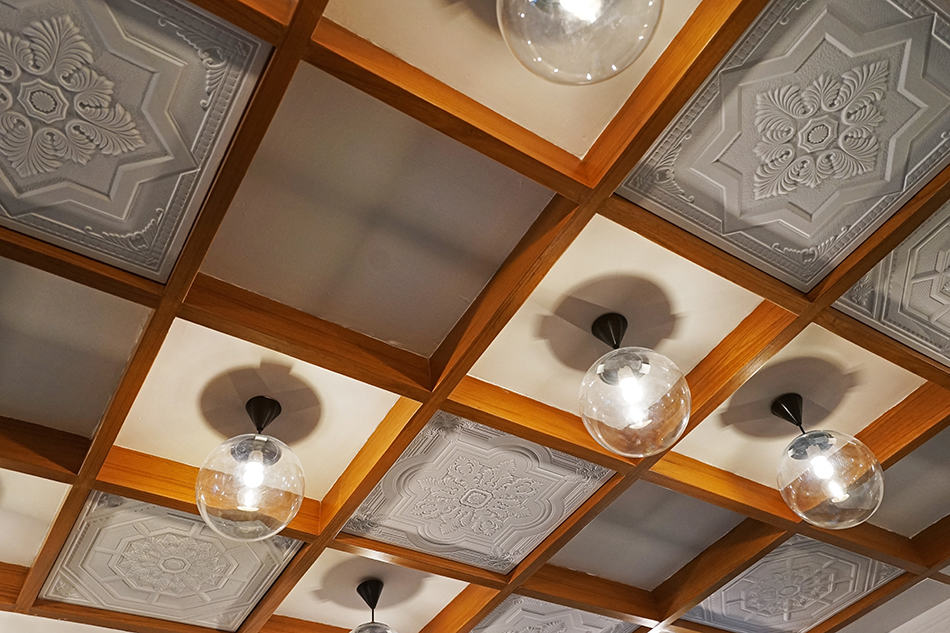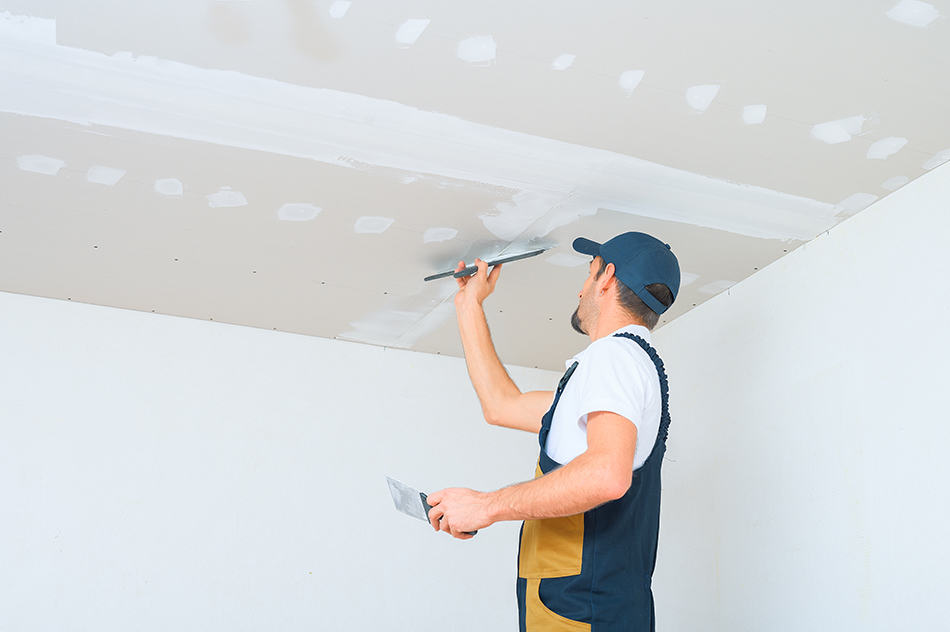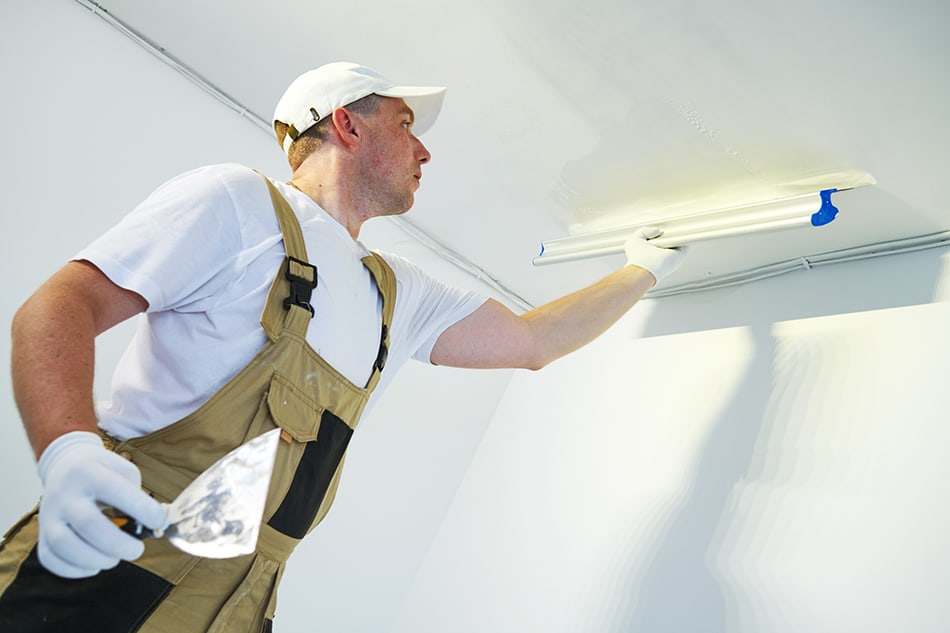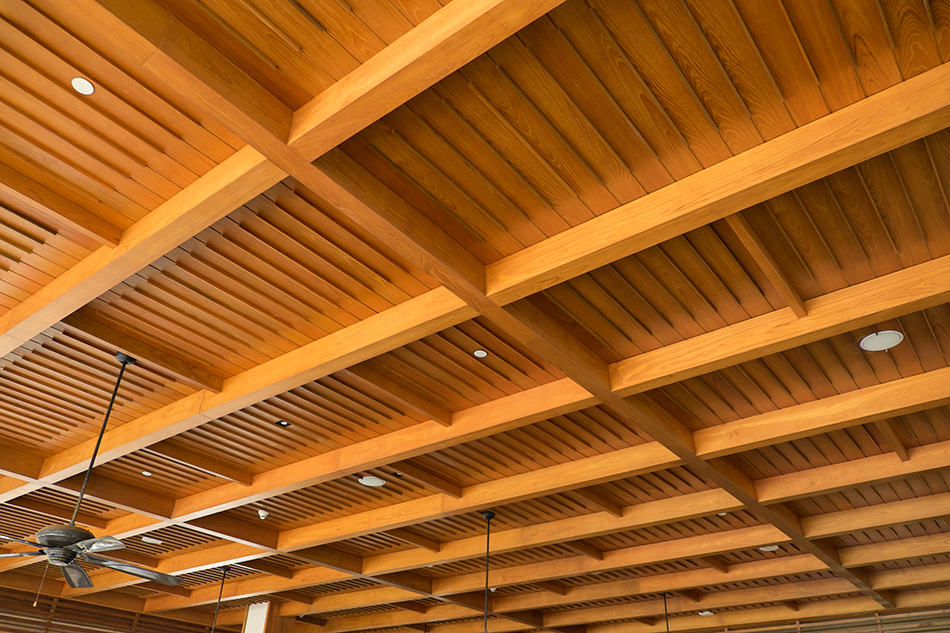Ceilings play a crucial role in both the structure and interior style of a home. It supports the interior walls, while its height, style, and materials can greatly impact the overall ambiance of the house.
Given the importance of ceilings in the house, it is not surprising that there are many finishing materials developed and employed for this part of the house. Continue reading the article below to know more about the different ceiling finishing materials.
Table of Contents
Drywall
Drywall is one of the more commonly used finishing materials for ceilings. It’s also widely used in interior walls. It may be made only of gypsum that’s covered with paper, but you’d be surprised at the prevalence of this material. It’s not a stretch of the imagination to say that it’s used in almost every building in the United States.
Drywall comes in various sizes and thicknesses, although the ½-inch variety is the most commonly used for ceilings. It is often fastened directly to the ceiling joists. Meanwhile, the drywall joints are taped and mudded so that they won’t be visible.
The drywall ceiling is also usually textured for audio purposes. A large and flat surface can cause echoes; therefore, a drywall ceiling is textured to deaden sound. It also serves a cosmetic purpose as the textured drywall can cover imperfections in the installation. Some of the common textures for drywall ceilings are orange peel, splatter, and popcorn.
Plaster
In the old days, particularly during the 1930s and 1940s, plaster was the most commonly used material for ceilings and walls. Its use, however, dates back to the ancient Greek civilizations. The world-famous Egyptian pyramids, for one, have plasterwork that’s similar to what we use today.
Plaster is a versatile material as it can be applied to almost any surface like wood, brick, or stone. It can also be molded into various decorative patterns, much like drywall.
It is commonly manufactured as dry powder. It is then worked and mixed with water to create a stiff paste that can be applied later on. The most common types of plaster are gypsum, cement with water, sand, and lime. Aside from ceilings, it can also be used in protecting and decorating internal walls and creating architectural moldings.
Wood
Wood is another popular ceiling finishing material. It is a practical and decorative material for the ceiling, capable of making your room look more inviting. In terms of practicality, you can paint wood in whatever color you like.
There are other reasons why wood is prime material for ceiling finishing. One is that wood is a great sound and thermal insulator. As a thermal insulator, wood can resist heat transfer or transmission. It also has superior sound insulation meaning it can deaden or dampen echoes.
And wood for ceiling finishing comes in a wide range of choices, from the cheapest and simplest to the most elaborate and expensive. In short, you can choose wood material for your ceiling finishing that suits your budget. Some of the popular wood types for ceiling finishing include beech, cedar, larch, oak, mahogany, and pine.
Fiberglass Tiles
A low-cost alternative to wood, fiberglass tiles are made from glass fibers in a polymer coating. And while it’s not yet as popular as wood as far as ceiling finishing is concerned, fiberglass tile can enhance the look and feel of your home if you opt to use it as a ceiling finishing material.
Fiberglass tiles are more commonly used in industrial and business applications. Ceilings in auditoriums, theaters, libraries, pubs, bars, and conference meeting rooms are typically made of this type of material.
Fiberglass ceiling tiles are lighter than wood. It’s also an environment-friendly option aside from being relatively easy to install. Fiberglass ceiling tiles can also be mounted directly to the ceiling using adhesive. This type of ceiling finishing material is also maintenance-free.
But you may wonder—why are fiberglass tiles not as popular as wood, especially in residential use? The main concern about this type of ceiling finishing material is its potential health hazard.
Installation and removal of fiberglass tile can be quite dangerous, especially when its microfibers fall into the dust. These are small enough to be inhaled and consequently damage our respiratory systems. Prolonged exposure can cause long-term health damage.
Metal
There’s no question that metal is the strongest material on this list. Strength is the primary advantage of metal as a ceiling finishing material, although there are other reasons why you’d want to use it for your ceiling.
For one, metal can absorb or redirect sound in the house. It can help in providing clarity to speech, especially in business environments. It’s not shocking that many offices have ceilings made of metal because of this standout trait of the said material.
Metal is also highly valued for its appearance. It can come in a wide variety of finishes, textures, and styles. You can coat it with any color and resemble any design or style. It also comes in many finishes like steel, copper, aluminum, brass, and chrome. Metal can be powder coated, polished, or brushed. It’s also typically used in covering an ugly plaster ceiling.
And there’s the strength of the metal. Compared to other materials in this list, it is less prone to breaks and cracks. It is also moisture resistant and can withstand stains and leaks. The strength of metal also means regular maintenance and repair of wiring, conduits, and cameras located in the ceiling can be conducted without fear of breaking the ceiling.
Conclusion
Now that you are familiar with the different types of materials used for ceilings, you may also be asking: “what’s the best ceiling finishing material for me?”
This answer depends on your needs. If you’re looking for a cost-effective option, then wood and drywall are your best bet. Drywall is particularly recommended if you want to finish your ceiling repair or construction in the shortest time possible. But if you’re building a pub or a bar, a fiberglass tile may be the best material for the ceiling.




